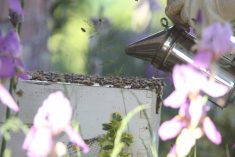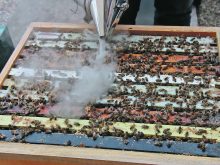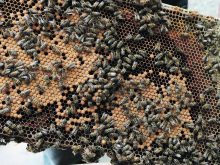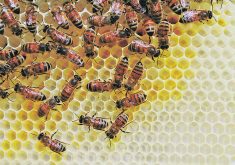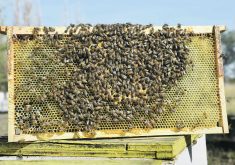The support provided by the federal and provincial governments comes after the sector suffered 57 percent winterkill
Last winter and spring were extremely difficult for Manitoba beekeepers.
A combination of varroa mites, a cold winter and a delayed spring with three Colorado Low storms caused severe losses of honeybee colonies in the province.
Data from the Canadian Association of Professional Apiculturists (CAPA) found that 57 percent of Manitoba bee colonies failed to survive the winter of 2022.
That’s two or three times higher than the acceptable losses for a beekeeper.
To help honey producers rebuild their colonies, the Manitoba and federal governments are providing $7.5 million in financial support.
Read Also

Government, industry seek canola tariff resolution
Governments and industry continue to discuss how best to deal with Chinese tariffs on Canadian agricultural products, particularly canola.
The two levels of government made the announcement June 20.
“Purchasing replacement colonies is the fastest option for returning to full production capacity,” they said.
“Under the Sustainable Canadian Agricultural Partnership and AgriRecovery, commercial beekeepers with 50 or more colonies … can apply to purchase replacement stock (colonies, packages and queens.)”
Ian Steppler, Manitoba Beekeepers Association chair, thanked the province and federal government for the support.
“Manitoba beekeepers have faced consecutive and compounding challenges over the past few years, including drought in 2021, spring snowstorm and a shortage of replacement honeybee stock,” Steppler said.
“Many producers were left short of honeybees for the 2022 season. The support … will help Manitoba producers accelerate the recovery from this extraordinary winter loss event.”
Manitoba wasn’t the only province with extreme winter losses in 2022.
CAPA, which surveys beekeepers every year, found:
- In Alberta, about 50 percent of hives failed to survive the winter. A similar program to the one in Manitoba has been announced for beekeepers in that province.
- Winter losses in Ontario were 49 percent.
- Saskatchewan beekeepers had better luck with winter losses estimated at 35 percent
Cold weather and spring snowstorms were a major cause of bee mortality, but most beekeepers said “ineffective” control of varroa mites was the main factor.
Varroa mites are relatively large, external parasites that attach themselves to honeybees, feeding on their bodily fluids.
The parasites weaken bees, making them more vulnerable to viruses and represent a major threat to bee colony health. Hives infested with varroa mites are less likely to survive the winter.
For years, beekeepers have relied on a single product, Apivar, to keep varroa mites in check, but they are now developing resistance to the miticide.
New miticides are in the development pipeline, but they may not be commercialized until 2028 or later.
“If all of a sudden we found ourselves without a synthetic miticide, winter losses would increase fairly significantly, and it would be that much harder to keep bees in Canada commercially viable,” Nathan Wendell, president of the Saskatchewan Beekeepers Development Commission, said in 2022.
Bee experts in Western Canada have been working on a stop gap solution to bridge the time until the new miticides are available.
That could be oxalic acid, an organic miticide that’s been around for a while.
“Oxalic acid is a registered miticide for varroa mite control, but has limitations,” said Medhat Nasr, a former provincial apiculturist in Alberta.
It works by delivering oxalic acid fumes to the mites, but a lot depends on how it is applied.
Sometimes the product breaks down into carbon dioxide and water, failing to transfer the necessary dose to the mites.
However, the Canadian company Bee Health Pharma has developed an applicator and tablets for oxalic acid to deliver a more consistent dose of the chemical.
The Saskatchewan beekeepers commission is now working on a project to “optimize” the use of oxalic acid on varroa mites.
“(The) proper dose at the right time, how many applications … that’s to be determined by the project,” said Nasr, who is leading the effort.
“That way we can help to keep the bees healthy … until we have the new tools (miticides).”






